
The VIBES Awards
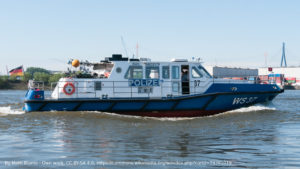
Welcome to The VIBES Awards: The Energy Efficiency Podcast – episode 16, the podcast that brings you a mix of energy efficiency news, products and tips all year round. We’re interested in profiling people and products involved in promoting energy efficiency habits, products and information, so please do get in touch if you have something to contribute. This week: the VIBES Scottish Environment Business Awards, energy efficiency in policing worldwide, and the Dow Jones Sustainability Indices.
Renewable energy
 But before we get on with our advertised features, The Economist recently reported on a potential new way to create renewable energy from the night time atmosphere. In July atmospheric scientist Professor Colin Price of Tel Aviv University reported to the International Union of Geodesy and Geophysics on a study to extract electricity from the type of damp air that occurs after sunset. Professor Price is the head of the Dept of Environmental Studies, and conducted the research with Judy Lax and Professor Hadas Saaroni.
But before we get on with our advertised features, The Economist recently reported on a potential new way to create renewable energy from the night time atmosphere. In July atmospheric scientist Professor Colin Price of Tel Aviv University reported to the International Union of Geodesy and Geophysics on a study to extract electricity from the type of damp air that occurs after sunset. Professor Price is the head of the Dept of Environmental Studies, and conducted the research with Judy Lax and Professor Hadas Saaroni.
This type of night air can reach a dampness of over 60% relative humidity – this is the case on Israel’s coastal plain. As the daytime air cools it’s unable to hold as much water vapour and so it releases it into the night air. Professor Price has created a capacitor from metal cylinders. Damp air passes through them and an electric charge accumulates. In theory this can be harnessed to drive a current through an external circuit. This effectively mimics lightning, even though no-one is exactly certain how lightning works.
We do know that for lightning to occur, water needs to be present in all states – ice, liquid water and water vapour. Professor Price’s apparatus mimics this with the use of concentric cylinders made of zinc which stand in for ice, water vapour in the air, and the droplets that form as water condenses. The molecules forming droplets of water will sometimes spontaneously break up into positively charged ions and negatively charged hydroxyl ions. These ions move through the water droplet at different rates and the negative and positive charges will be separated, which leads to a charge on the surface of the zinc cylinder and thus a potential difference in the capacitor.
Scaling
Professor Price believes therefore that he understands how the reaction occurs within his capacitor and now faces the question of scaling up the system to a usable degree. So far the system has created just under a volt of electricity.
If it can be made to work at scale, Professor Price’s system would start working just as solar power stops. It could negate the need for batteries to store solar-generated power for use in the hours of darkness. The research also furthers our understanding of lightning and related atmospheric conditions.
The Dow Jones Sustainability Indices
Last week I made fleeting reference to the Dow Jones Sustainability Index. This tracks the stock performance of the world’s leading companies in terms of economic, environmental and social criteria. We referred to them last week in our brief feature on so-called “secret sustainability”. This is the practice of keeping quiet about sustainability and energy efficiency improvements for fear of inviting unwelcome attention to less green areas of business, spooking customers or the supply chain that prices will go up or quality down, and the general belief that sustainability equals compromise. Looking at the Dow Jones Sustainability Index, it’s clear that companies paying the most attention to energy efficiency and wider environmental considerations are performing the best.
Background
This year the index celebrates its 20th birthday. It was launched in 1999 as the first global sustainability benchmark. It was created jointly between Dow Jones and RobecoSAM, an investment specialist which focusses solely on what it terms “sustainable investing”. If you want more on that, RobecoSAM has this on its website:
“At RobecoSAM we believe that corporate sustainability is a company’s capacity to prosper in a competitive and changing global business environment by anticipating and managing current and future economic, environmental and social opportunities and risks. We use financial markets as one of the most powerful transmission mechanisms to promote sustainable business practices.”
This combines index expertise with specialists in sustainable investing. The index looks at business across 61 countries and its results inform investors who “integrate sustainability considerations into their portfolios and provide an effective engagement platform for investors who wish to encourage companies to improve their corporate sustainability practices.”
The principle is simple: the best performing companies are paragons of best practice in sustainability and therefore longevity. This generates long-term benefit for shareholders.
International
The index was created as an alternative to the Dow Jones stock exchange. Instead of measuring the performance of a company’s finances, it evaluates the sustainability of a company’s business operations in environmental, social and economic terms. The index takes into account global, regional and national benchmarks. Regions include Europe, Nordic, North America, Korean and Asia Pacific. The DJSI picks out the 320 best-performing companies from the 2500 largest companies worldwide.
Over its 20 years of operation, the requirements to make it into the DJSI become ever more stringent. As the big players improve their practices, competition becomes stiffer, so companies are paying attention to what everyone else is doing in order to be better. Companies have to keep abreast of developments both in their sector and in their region. Sectors have differing requirements so companies nearby to each other may be competing for entry on different criteria.
Questionnaire
Whether or not your company is planning to compete for entry, going through the DJSI questionnaire is in itself a very useful exercise. The questionnaire contains 100 questions and the weighting of the questions varies year to year. The assessment is enhanced every year to measure under-researched and under-reported factors. This will help to better identify those companies best placed to meet the challenges and opportunities of sustainability in the future.
Managing efficient energy consumption is vital to be in with a chance and the operative word there is managing. Understanding and quantifying energy management is vital to identifying both areas for improvement and best practice.
Dexma, the energy analytics company, recommends carrying out an energy audit as the first step to competing for inclusion in the index. The results of an audit will allow you to plan improvements to your premises and operations, identify possible equipment changes and improvements, identify poor energy habits to eradicate, and check that you’re on the best energy tariff. These steps are beneficial for all companies, regardless of their interest in the DJSI.
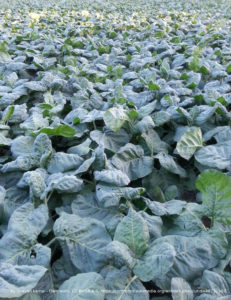
Beyond energy use, the DJSI looks at: corporate governance, risk management, branding, climate change mitigation, supply chain standards and employment practices including the living wage. Perhaps surprisingly for an index that includes an ethical element, it includes companies profiting from tobacco, gambling, armaments and firearms.
Assessment
Each company is assessed on information from the annual questionnaire, company documentation, media and stakeholder analysis, and personal contact. Once listed, a company is monitored daily and if issues arise that are considered serious enough, a company can be excluded from the index. This includes human rights abuses, catastrophic disasters and worker disputes.
The questionnaire has come in for some criticism. As it is filled in by the companies themselves it has been accused of rewarding those best able to respond to the questionnaire rather than necessarily those with the best practices. Wikipedia suggests that this brings the credibility of the DJSI into question. To quote Wikipedia,
“Ultimately, companies with challenging corporate environmental and social issues are more likely to devote public relations resources to minimize the perception of risk within their operations.”
Trust
RobecoSAM added the Media and Stakeholder Analysis element to the assessment intending to corroborate the information companies present about themselves. The DJSI tends to be biased towards economic criteria, which I think you would expect from an initative springing out of a stock exchange. A further criticism is that it includes only large companies, whereas other indices include smaller ones too. Likely due to these limitations, a survey of sustainability experts in 2011 found that only 48% looked upon the DJSI as “highly trusted”.
By contrast, the 2019 Rate the Raters survey delivered by SustainAbility, which canvasses companies about which sustainability ratings service they find most useful, RobecoSAM came out on top. The research questioned thousands of sustainability professionals about which ESG rating systems they placed their faith in. SustainAbility essentially helps companies improve sustainability. They run several reports on sustainability in big business.
2019 results
By complete fluke, having planned to run this feature this week, we learnt that the DJSI reported its latest findings last Friday. Three companies joined the index: Alphabet (that’s Google to you and me), CVS Health Corp (American retail pharmacy and health care company), and Reckitt Benckiser Group PLC (British multinational company producer of health, hygiene and home products). Three companies came off the index: Citigroup Inc, the American investment bank, Royal Dutch Shell PLC which needs no introduction, and 3M Co, the American manufacturing giant.
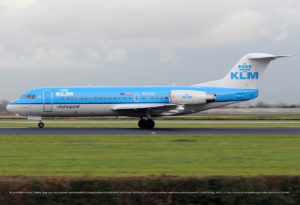 KLM
KLM
One company doing very well in the DJSI is airline KLM, which tops the Airlines category. In some ways this identifies both a strength and a weakness of the DJSI: flying is inherently polluting, so what is an airline doing in a sustainability index? On the other hand, if you’re going to run an airline, be recognised for making it the most sustainable airline. KLM has been in the top three for 15 years.
KLM has achieved its position through progress in several areas of its operations. In 2018 it reduced co2 emissions while expanding operation. Emissions per passenger are down 17% on 2011. KLM launched its ‘Fly Responsibly‘ initiative in June this year. It has several aspects but one invites passengers to compensate for their flight’s CO2 emissions by contributing to a reforestation project in Panama. KLM has been running a scheme of this sort for 10 years. To date 3.5 million trees have been planted.
It encourages passengers to look for alternative methods of travel, especially for short journeys. On its website KLM points out that it’s quicker to take the train from Amsterdam to Brussels than it is to fly. It suggests video calls instead of meeting in person. When you do fly, KLM encourages you to travel light as less weight means less fuel consumption. Stay somewhere eco-friendly when you arrive.
Biofuel
Businesses regularly flying with KLM are invited to partner in its Corporate BioFuel Programme. A fee covers the difference in cost between kerosene and biofuels. The intention is to make sustainable aviation fuel an economic competitor to kerosene, and to make it available on a larger scale.
KLM is keen to work with other businesses to “create a sustainable future together”. To this end it’s running webinars which began this month aimed at sharing best practice. Sustainable fuel was the subject of the first webinar. KLM views sustainable aviation fuel as the main approach to improving the sustainability of air travel. It’s now the biggest single buyer of biofuel for air travel. From 2022 this fuel will be produced in the first European factory for sustainable aviation fuel, to be built in Delftzijl.
Together with Delft university KLM is developing a more fuel-economic aircraft. The V-shaped design will put passengers, crew, cargo and fuel tanks in the wings. Next month a scale model and life-sized section will be on display during the KLM Experience Days at Schiphol.
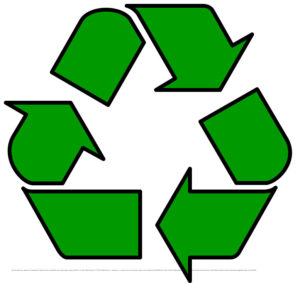 It has a good record on recycling its waste. It splits out 14 materials for recycling and recycles old uniforms. They were transformed into fibre which then carpetted cabin interiors. It has plans to reduce the waste generated inflight on the basis that the less you generate the less there is to deal with.
It has a good record on recycling its waste. It splits out 14 materials for recycling and recycles old uniforms. They were transformed into fibre which then carpetted cabin interiors. It has plans to reduce the waste generated inflight on the basis that the less you generate the less there is to deal with.
As with all the assessment and award systems we’ve looked at over the last few weeks, the DJSI isn’t perfect. Despite KLM’s good showing, appearing in the DJSI isn’t a clean bill of health on sustainability and it doesn’t mean job done. It does however provide a framework for making improvements, and for those companies for whom it’s important to be highly visible at the top, inclusion on the index is a boost.
The VIBES Scottish Business Awards
What are we talking about this week?
The VIBES Awards. They’re the Scottish Environment Business Awards. The annual awards recognise and showcase best practice among Scottish businesses in reducing their impact on the environment. Several organisations come together for the VIBES: Scottish Environment Protection Agency, The Scottish Government, Energy Saving Trust, Highland & Islands Enterprise, Scottish Enterprise, Scottish Water, Zero Waste Scotland, Scottish Natural Heritage, CBI Scotland, the Institute of Directors, Federation of Small Businesses, Bright Green Business, Scottish Council for Development and Industry and the Scotch Whisky Association.
What are specific aims of the VIBES?
As you’d expect, efficient use of resources, improved environmental performance, supporting the wider goals of sustainable development which includes social issues, and doing all this while enhancing the competitiveness of the business.
It sounds similar to the Dow Jones thing.
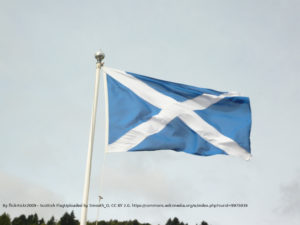 Well, it has overlap let’s say, including that VIBES is also celebrating its 20th birthday. VIBES is just Scottish businesses, and there’s a big ceremony to hand out the gongs. The awards are accredited by the RSA, The Royal Society for the Encouragement of Arts, Manufacturers and Commerce. The RSA in turn puts companies forward for the European Business Awards for the Environment, held every two years.
Well, it has overlap let’s say, including that VIBES is also celebrating its 20th birthday. VIBES is just Scottish businesses, and there’s a big ceremony to hand out the gongs. The awards are accredited by the RSA, The Royal Society for the Encouragement of Arts, Manufacturers and Commerce. The RSA in turn puts companies forward for the European Business Awards for the Environment, held every two years.
Do businesses have to be big to be considered?
No, not really. The VIBES website says that the awards are open to any business based in Scotland that makes a contribution to the sustainable development of the country. Realistically that does mean having proper plans and an effective approach to sustainability and making improvements to the environment. That can be across the whole business or just focussed on one area.
Who won this year?
We don’t know yet. Applications have closed-
– do companies apply themselves?
Yes, then the judges draw up a shortlist and visit those businesses.
Is this year’s shortlist out yet?
Yes. There are 36 businesses on it. The awards fall into 11 categories including leadership, the circular economy, engagement and small businesses. Some companies compete in more than one category.
Best Of
This year, to mark the 20th anniversary, a previous winner will receive a special award recognising their ongoing contribution to sustainable development, particularly by adopting new practices and keeping its environmental practices under review.
Give me an example.
Castle Group Scotland. They’re in the construction sector. They won the Management category for SMEs in 2012.
So since then they’ve kept on improving have they, to be eligible for this ‘Best of’ award?
They’ve made great strides. Their carbon impact is down by 40% and it now diverts over 90% of landfill from waste. That sort of thing doesn’t just happen, it involves careful planning, creating systems, ensuring they operate as they should and ensuring staff are on board with it. Castle Group’s approach is to repair, restore and refurbish before building. This is very impressive as they work in heavy duty sectors including marine, defence, road and rail. This approach has a title – Giving the Past a Future. They also have an emergency protocol for projects involving sensitive ecology and protected habitats or species.
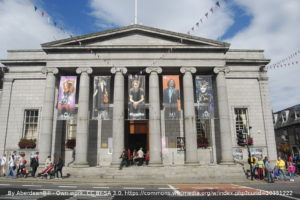
They’re reviewing how staff move between sites to best manage their fleet and the fuel it uses to mitigate against the climate crisis. So far efficiency improvements there have saved over £5000 and 10.5 tonnes of CO2.
Advice
There’s a great deal of advice available. Castle Group worked with Resource Efficient Scotland, Zero Waste Scotland’s business advisory programme, to review its strategies on waste management and resource reuse and develop improved systems. This gave Castle Group a leg-up in circularity, and saved them £30,000 on a deep refurbishment of Aberdeen Music Hall. On that project 80 tonnes of rubble was reused on site-
– reusing on-site is a significant element
– yes, it has numerous beneifts, as seen at the Glasgow Queen Street station refurb. 35 tonnes of wood was reclaimed as part of the project and donated to a local social enterprise for reuse as furniture. The old lifts and hoists were donated to a production company.
Other companies up for the Best Of award have a raft of achievements to their names. There’s a full list of this year’s finalists across all categories on the VIBES website. They includes Cycling Scotland and Vegware, along with well-known names such as Diageo and ScotRail.
Vegware
As a vegetarian I have to ask, what is Vegware?
It’s not edible! It’s one of those companies that’s pretty big but you may well not have heard of it if you don’t operate in their sector. They make “plant-based compostable foodservice packaging”. Their website shows straws and paper ice-cream pots and takeaway coffee cups but it’s much more than that. In fact it’s a lot more than that. They operate all over the world with their HQ in Edinburgh, and have been going for 13 years.
What categories are they in?
Circular Scotland and Service Scotland. They source the raw materials for their packaging from reclaimed or recycled materials, and then their products can be commercially composted wherever food waste is accepted. They run a collection service in the west of Scotland-
– anywhere I’ve heard of?

Fort William, Oban, Stranraer, Girvan, Ayr. The idea is to close the materials loop by collecting its own used products and turning them into compost. The project, called Close the Loop, was initially launched in central Scotland. It was a success so they started another in the south west of England – Bristol, Gloucestershire and Worcestershire – and now include the West of Scotland.
Food contamination
The crucial element here is that food contamination, which can scupper regular recycling, isn’t an issue with composting and is in fact a virtue. It also means the customer’s recycling remains free of food contamination.
They’ve had a few years to get this right before the government moves in on single-use plastic more widely.
This is the perfect example of a company doing “the right thing” long before it’s mandatory and then being ideally placed when the rest of industry is galloping to keep up and adapt. The public outcry against single use plastic together with the EU Single Use Plastics Directive has seen Vegware go from strength to strenth. Also, when you look at the products on their site, they’re beautifully designed.
No compromise for environmental sustainability.
Exactly right. Other companies have taken innovative approaches to their business.
JawBrew
JawBrew is a Paisley craft micro-brewery which received a Commended in the Circular category of last year’s awards. One of its beers, the low alcohol Hardtack, is produced from unsold morning rolls from Aulds the Baker’s. Auld’s approached JawBrew as a solution to using up unsold rolls. The resulting beer was considered to be very full bodied for a low alcohol beer, and that by accredited beer tasters from the Society of Independent Brewers and CAMRA.
How much bread do you need for that?
Each batch uses nearly 30kg of waste rolls, which replaces about 60kg of malted grain. Spent grain goes for cattle feed, and the hops are used by a gardening club for weed suppressant. Heat from the brewery’s processes heats water which sits in an insulated tank until it’s needed for brewing. In its turn, JawBrew hopes to use their by-products for other companies to turn into high value products. So that might be spent grain for a high fibre loaf or a protein bar, and producing yeast. They’re signed up to the Have you got the Bottle initiative to re-use beer bottles, and plan to replace some of their equipment to make yeast recovery easier.
Can they reuse it?
Effectively. It can be recultivated and used, which means they don’t have to buy it in fresh each time. JawBrew viewed its Commendation as a recognition of its activities, and hopes it’s an inspiration to other companies.
What do companies really gain by winning a VIBES Award?
Well like the DJSI, an award of this sort is tangible evidence that a company is doing good things. Labelling itself an award winner is a clear label to demonstrate to the rest of industry and to potential clients that they’re putting their money where their mouth is on sustainability issues rather than just waffling on about good intentions. It’s a pat on the back for staff who are the ones seeing through these policies day-to-day.
When are this year’s winners announced?
There’s a couple of months to wait. The awards evening is on 14th November and will be at the Doubletree by Hilton in Glasgow.
Energy Efficiency in Policing

Policing is an energy intensive business. It includes people, buildings, cars, boats, dogs, horses, scientific facilities, IT and comms and many more elements. Police forces in many countries date back well over 100 years and legacy buildings will be major drains on energy efficiency. There is huge scope to improve energy efficiency in all areas of police operation without hindering activities or making the forces less effective.
In northern Hesse in Germany a new 4000 square metre police administrative building was built to passivhaus standards five years ago. This has brought down energy consumption in government buildings in Hesse. The building was constructed as part of a government passivhaus pilot and the findings will be applied to future construction projects. This is part of Hesse’s target of becoming carbon neutral by 2030.
In this case the building was monitored for two years after the police force moved in. The results included greater thermal comfort for the occupants, a very low heating requirement and much improved server room management. This building has five server rooms so improving the management of the cooling systems has made a big impact on energy use. Cooling could have been approached differently with a greater use of passive cooling, but the heat pump and cooling tower used to keep the building comfortable is very efficient and overall
electricity consumption was low.
The building cost the government of Hesse 20 million euros. This was a little higher than for a standard build, but it was clear from the beginning that the extra cost would be more than recouped through lower running costs. Lower operating costs protect the government from rising fuel prices.

Dubai Police
The United Nations website profiles the Dubai Police Force, which aims to be carbon neutral by 2020, which isn’t very far away at all now. It began its efforts ten years ago. If the Dubai force achieves net zero it will be the first police force in the world to do so. This is part of Dubai’s aim to be the city with the lowest carbon footprint in the world by 2050.
The zero carbon initiative is now core to all Dubai Police’s activities. It has recognised that this will work only within a strong framework and with employees very aware of what the strategy requires of them. This awareness is being raised through the activities of so-called Carbon Champions who are furthering the culture of energy efficiency within the police force, which numbers over 22,000 people.
Key elements of Dubai Police’s strategy include:
- transforming its fleet of over 3000 vehicles to hybrid cars in stages, which has reduced fleet fuel consumption by nearly 20%, and optimising patrol routes
- Reduction of water and electricity use within buildings and fitting LED lights
- installing solar panels on police station rooves, rolled out to all 400+ police buildings by next year
- using technology to provide services electronically and discouraging visits to police stations. So far this move alone has already saved thousands of tonnes of CO2 emissions
The force is also experimenting with a solar boat. Dubai Police is raising awareness of its practices beyond the police force, through taking part in exhibitions, running training and education sessions, and operating mentoring programmes. This has gained public support for Dubai Police. As Dubai’s population grows the expectation is that Dubai Police’s energy efficiencies will scale through adopting best practice which can be applied to other organisations within Dubai such as the civil service, and to other security organisations worldwide.
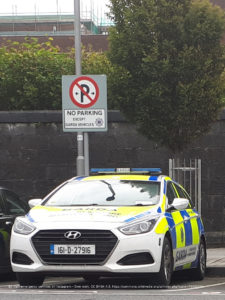
An Garda Síochána
Last year website certificationeurope.com reported that the Irish Republic’s police force – An Garda Síochána – was the first police force to achieve ISO 50001 certification for energy management. Now that might not sound very exciting, but it translates to savings of over €9million on energy costs. Imagine what police forces in the UK could do with an injection of say £9m. It has reduced emissions by over 70,000 tons.
For this achievement An Garda Síochána won the Award of Excellence at the 2019 Energy Management Leadership awards in Denmark, beating many big companies to the top prize.
It’s taken AGS eight years to reach this point from first starting to reduce energy use. In 2015 it set out to become the first police force to achieve the ISO certification. At this stage the certification applies to its headquarters in Dublin, its entire transport fleet and its Garda College, but AGS is committed to extending it to their entire operation. It has targets to keep improving its energy efficiency, and is exceeding targets so far.
Management
AGS has achieved this in part through using an ISO 50001-certified energy management system. It comes up time and time again that you can’t start making serious improvements until you know the state of play. This is particularly the case in such a large and disparate organisation as a police force.
As with other organisations we’ve looked at, the small everyday actions make a difference – turning lights off and ensure they’re off after office hours. Such a tiny policy and an easy thing to overlook, but it makes a difference, particularly across multiple buildings. AGS assessed and reviewed heating, cooling and ventilation, and ensured equipment including cars was kept well-maintained. Maintenance contractors themselves are audited to ensure optimal performance. Perhaps this is what we should be expecting from publicly-funded services – perhaps we even assume that happens as standard already?

Surrey & Sussex
In Surrey and Sussex in the south of the UK, two police forces have begun working together on an environmental policy. In the UK we don’t have one national police force but numerous smaller ones often, but not always, country-based. For instance we aren’t looked after by Herefordshire Police, but by West Mercia Police which covers Herefordshire, Worcestershire, Shropshire, Telford & Wrekin.
Surrey shares a long border with West Sussex and a very small one with East Sussex, so working together makes a great deal of sense. The point of the joint venture is to deliver the forces’ environmental objectives in energy efficiency across all sites. Together they are developing a system to manage this. They first gathered figures from 2015-16 to use as a baseline. In this period Surrey policing emitted 9,400 tonnes of CO2. The target is to reduce that by 15% by 2021-22.
In Surrey staff operate out of nearly 70 buildings and the two forces between them have over 2000 vehicles. The Surrey force has delivered over 30 projects so far to reduce building- and transport-related emissions. Many more are in progress. Buildings projects so far include all the usual improvements to and monitoring of heating, cooling, lighting etc and installation of solar panels.
Fleet
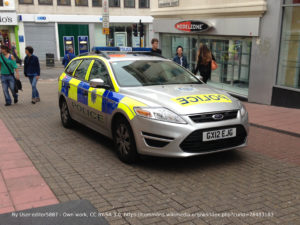
Review of the fleet revealed that emissions could be reduced while saving money. Firstly the force plans to stop using the worst-polluting vehicles except where there no alternative operationally. Both forces are evaluating electric and hydrogen-fuelled vehicles. 60 unmarked police cars have been replaced by electric vehicles, instead of replacing them with diesel vehicles which would otherwise have been the case. Taking the opportunity to replace any equipment with a more energy efficient model as part of already planned upgrade or replacement work is a key way to keep costs down while improving energy efficiency.
The forces have to distinguish between response vehicles and non-response vehicles, and are designing trials and planning expenditure accordingly. Non-response vehicles are used for duties such as visiting victims and witnesses or on short patrols. For this purpose the forces have chosen the BMW i3 which has a range of 100 miles between charges. Battery back-up can extend this range by another 100 miles so making the vehicles more multipurpose. The forces estimate that this change alone will make initial savings of £120,000 per force over five years, simply from reduced fuel, servicing and maintenance costs. If you’re interested in the detail of the charging points the police will use and how the pricing compares to petrol or diesel cars, follow the link in the notes.
The Swiss canton of St Gallen is operating a similar phased replacement policy, preferring Hyundai Kona electric vehicles for its fleet. Reviewing the fleet is happening worldwide, as is the installation of solar panels.

Delhi Police announced in July this year that they will be installing solar panels on 200 of its buildings across the city and have signed an agreement with the Solar Energy Corporation of India. Delhi Police has significant electricity requirements so plans to put vacant roofs to good use and bring down bills. Delhi Police is seen as India’s premier police force, so its actions will be influential across the country.
Events
The Welcome Centre in Coventry hosts Future Energy Platforms from 7.30am on Tuesday 29th October. The event is run by Coventry City Council’s Green Business Programme. To quote:
“This event will discuss how we are planning on solving this challenge facing society and what low-carbon measures are already in place within our local region. Speakers will be presenting on the key energy technologies that are currently available for businesses to deliver their carbon and sustainability targets. There will also be presentations from real-life business case studies, and top tips to provide readers with the insight and inspiration needed to drive forward their energy agendas.”
There’s information on funding available to SMEs in Coventry and Warwickshire. You can go on a walking tour of Coventry city centre’s underground Heatline and of buildings that are powered by renewable energy. Book online.
And what are we up to? We’re having new cuts made as we speak and orders are building up for this coming batch. We’re on TV this week: a previous version of the Petflap will be in Episode 3 of the New Zealand version of Grand Designs. We’re tracking down a way to view it.
Thank you for listening to episode 16 of the Energy Efficiency Podcast. Until next time you can find us on both Twitter and Instagram as Ecoflap, and on Twitter we also tweet as The Petflap. Next week: EE in zoos, competitions for energy efficiency innovation and mineral wool insulation.
Music credit: “Werq” Kevin MacLeod (incompetech.com)
Licensed under Creative Commons: By Attribution 3.0 License
http://creativecommons.org/licenses/by/3.0/
